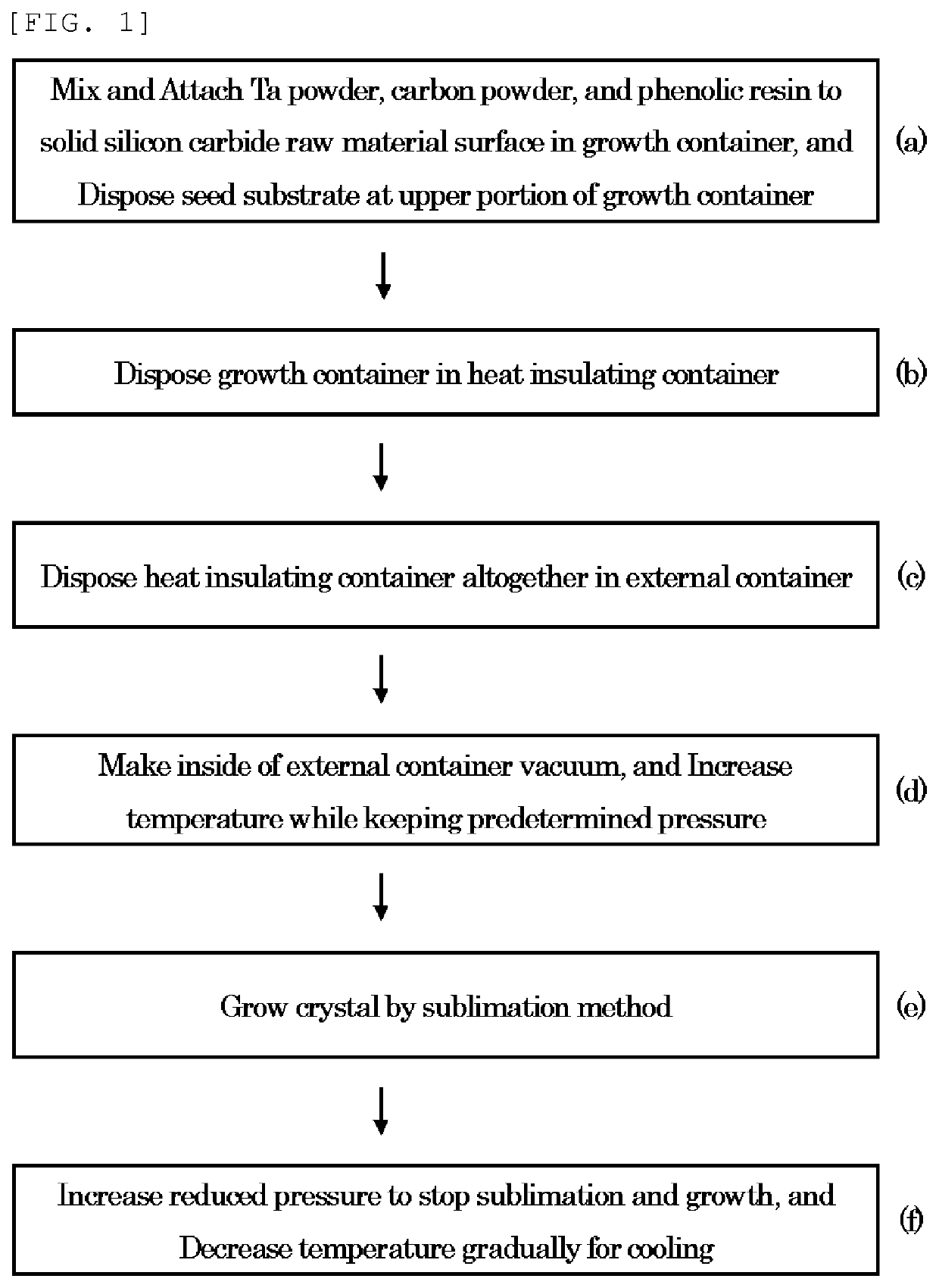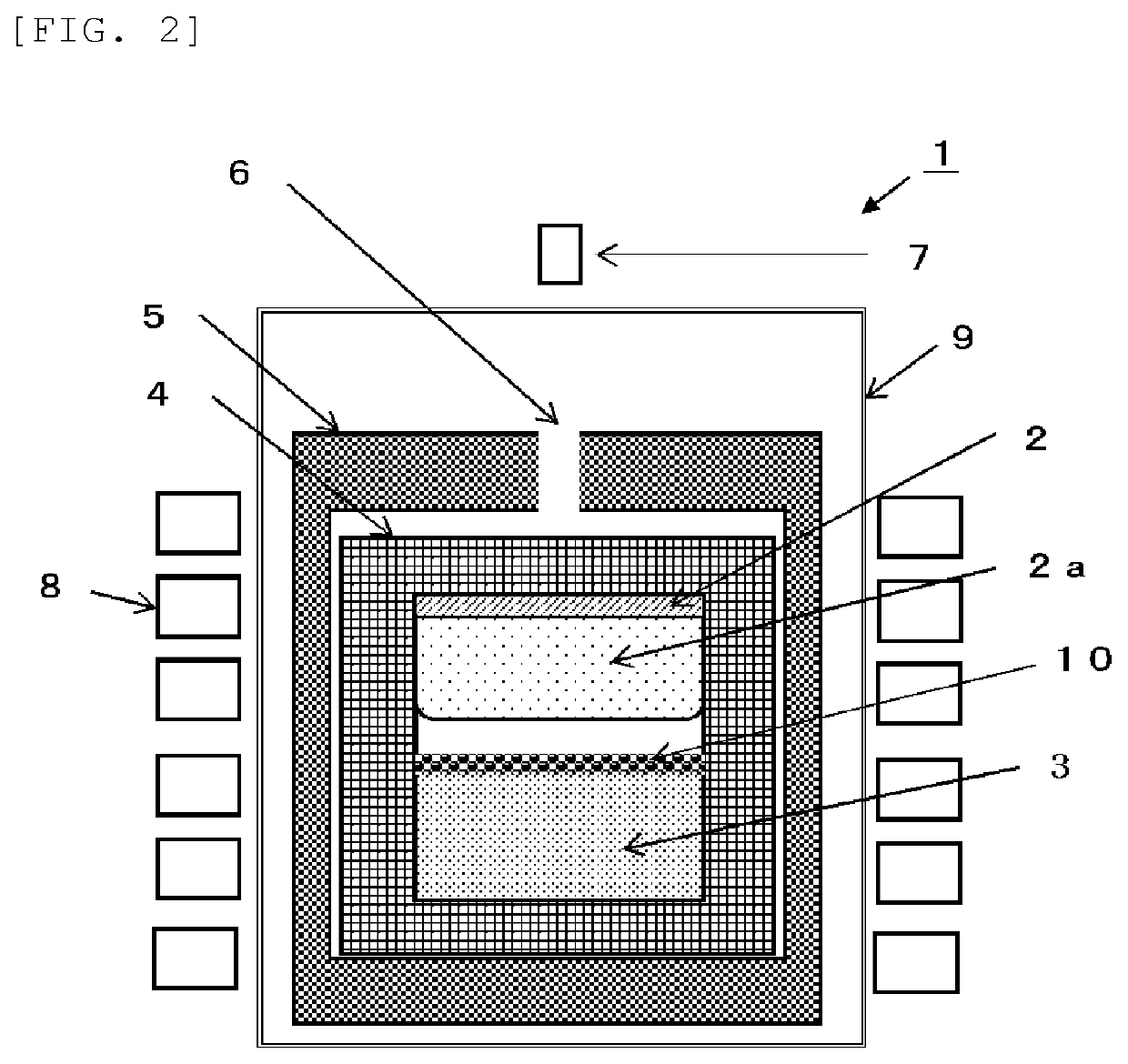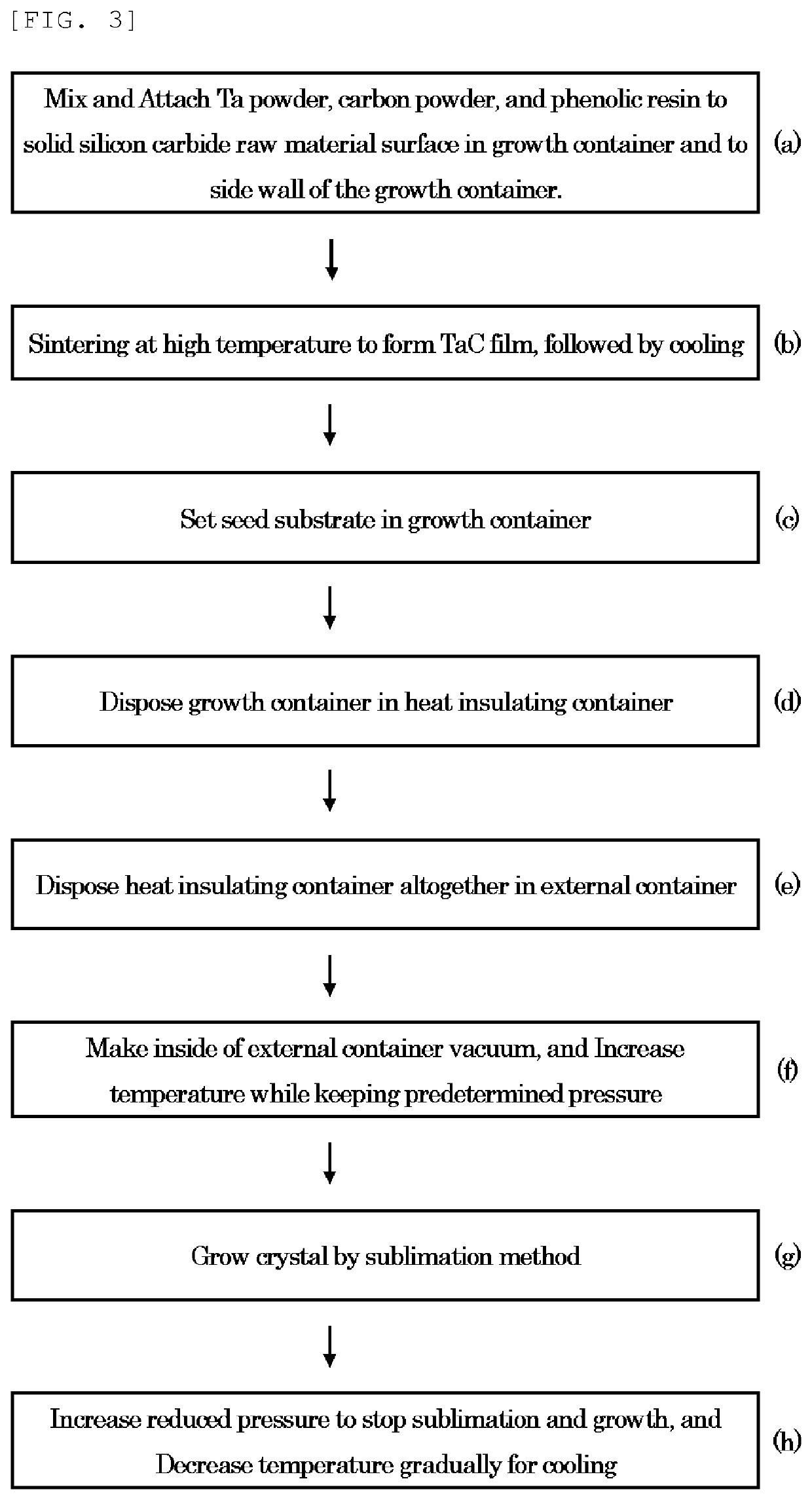Method for manufacturing silicon carbide single crystal
- Summary
- Abstract
- Description
- Claims
- Application Information
AI Technical Summary
Benefits of technology
Problems solved by technology
Method used
Image
Examples
first embodiment
[0037]Herein below, a method for manufacturing a silicon carbide single crystal according to a first embodiment of the present invention will be described with reference to FIGS. 1, 2.
[0038]FIG. 1 is a flowchart showing the method for manufacturing a silicon carbide single crystal according to the first embodiment of the present invention. FIG. 2 is a schematic cross-sectional view of a SiC manufacturing apparatus with which the method for manufacturing a silicon carbide single crystal according to the first embodiment of the present invention can be carried out.
[0039]As shown in FIG. 2, a SiC manufacturing apparatus 1 includes a growth container 4 for housing a seed substrate (seed wafer) 2 and a solid silicon carbide raw material 3, a heat-insulating container 5 surrounding the growth container 4, a temperature-measurement sensor 7 for measuring the temperature inside the growth container 4 via an upper-portion temperature measurement hole 6 provided through the heat-insulating co...
second embodiment
[0048]Next, a method for manufacturing a silicon carbide single crystal according to a second embodiment of the present invention will be described with reference to FIGS. 3, 4.
[0049]FIG. 3 is a flowchart showing the method for manufacturing a silicon carbide single crystal according to the second embodiment of the present invention. FIG. 4 is a schematic cross-sectional view of a SiC manufacturing apparatus with which the method for manufacturing a silicon carbide single crystal according to the second embodiment of the present invention can be carried out. A SiC manufacturing apparatus 1′ in FIG. 4 has the same configuration as that of the SiC manufacturing apparatus 1 in FIG. 2.
[0050]In the method for manufacturing a silicon carbide single crystal according to the second embodiment of the present invention, first, as described in FIG. 3(a), a Ta powder, a carbon powder, and a phenolic resin are mixed together, and attached to the surface of the solid silicon carbide raw material ...
example 1
[0061]Under the following growth conditions, a SiC single crystal with a diameter of 4 inches (100 mm) was grown.
[0062]Seed crystal substrate . . . a SiC single crystal substrate with a diameter of 4 inches (100 mm) and the main surface being tilted by 4° from the {0001} plane in the direction[0063]Growth temperature . . . 2200° C.[0064]Pressure . . . 10 Torr (13 hPa)[0065]Atmosphere . . . argon and nitrogen gases
[0066]The SiC single crystal was prepared according to the procedure as described in FIG. 1 (i.e., the procedure described in the first embodiment).
[0067]The prepared single crystal was sliced. The distribution and average number (density) of carbon inclusions in the wafer plane were examined with a microscope. FIG. 5 shows the result. As can be seen from FIG. 5, the carbon inclusion density in Example 1 was 2.4 / cm2. This shows that significant improvement was achieved in terms of carbon inclusion in comparison with Comparative Example to be described later.
PUM
 Login to View More
Login to View More Abstract
Description
Claims
Application Information
 Login to View More
Login to View More - R&D
- Intellectual Property
- Life Sciences
- Materials
- Tech Scout
- Unparalleled Data Quality
- Higher Quality Content
- 60% Fewer Hallucinations
Browse by: Latest US Patents, China's latest patents, Technical Efficacy Thesaurus, Application Domain, Technology Topic, Popular Technical Reports.
© 2025 PatSnap. All rights reserved.Legal|Privacy policy|Modern Slavery Act Transparency Statement|Sitemap|About US| Contact US: help@patsnap.com



